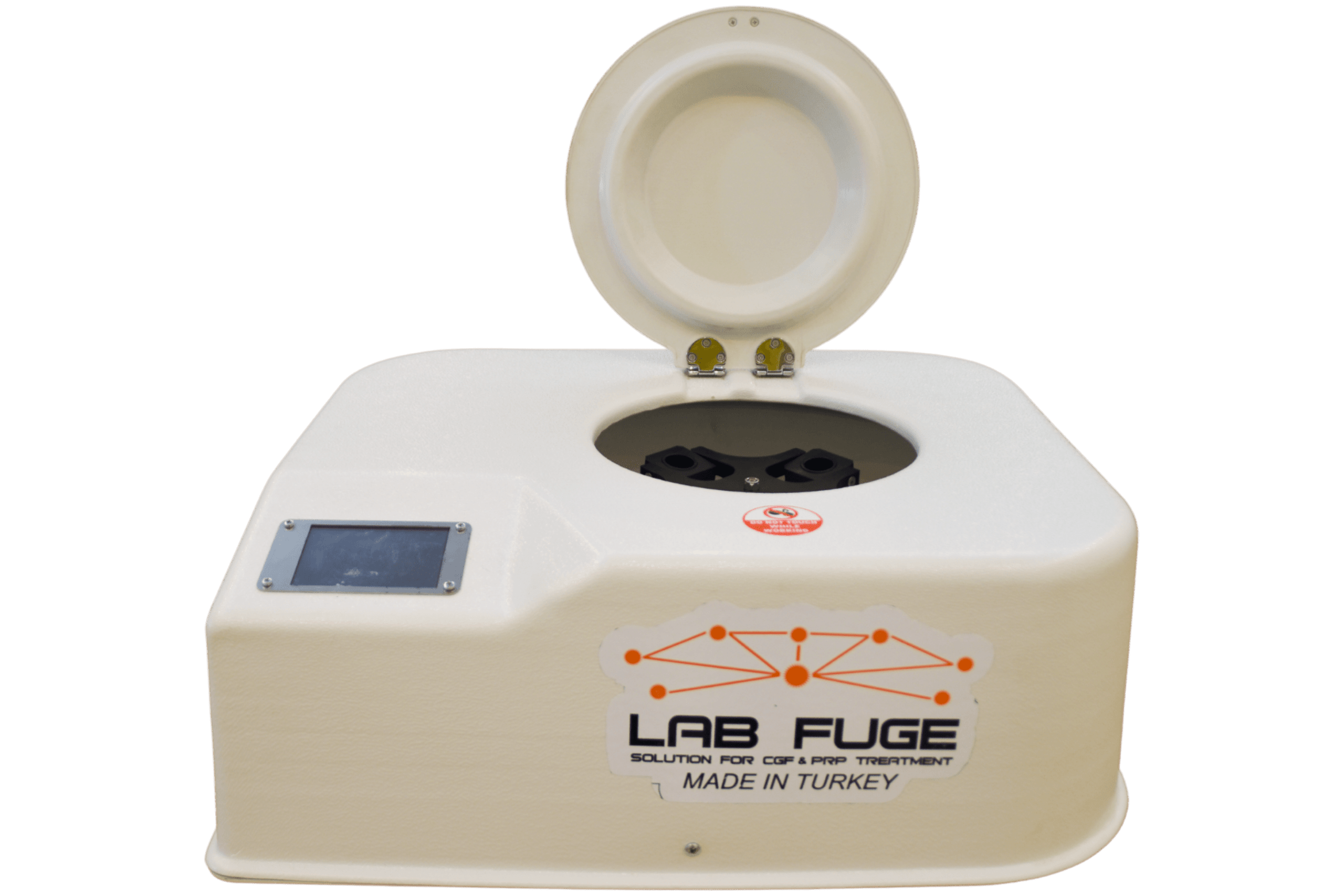HOW SHOULD THE CENTRIFUGE DEVICE BE FOR PRP?

After comparing a range of single and double centrifugation protocols, Perez et al. (2014) found that centrifugation at 100 g for 10 min followed by 400 g for 10 min was optimal. This protocol yielded a 5× increase in platelet concentration above the basal level and preserved platelet integrity.
Similarly, Yin et al. (2017) compared a range of centrifugal gs and durations, finding that double centrifugation with 160 g for 10 min followed by 250 g for 15 min produced the greatest increases in platelet and growth factor concentrations [11].
In terms of single centrifugation protocols, Perez et al. (2014) reported that centrifugation at 70–100 g for 10 min was optimal, while >190 g decreased platelet concentration.
Overall, current research suggests that double centrifugation at a moderate but not excessive centrifugal force (100–160 g followed by 250–400 g) for 10–15 min yields the greatest increase in platelet concentrations.
Storage conditions for PRP
In terms of best practice for storing PRP, evidence suggests that storage at room temperature is adequate—however, care should be taken to preserve the sample if it is stored for more than a few hours.
Ideally, PRP should be used within 8 hours of centrifugation, as this maintains the leukocyte concentration and pH of the solution.
However, PRP can safely be stored for 24 hours at room temperature without affecting platelet counts or activation. Therefore, a longer storage time may be possible if platelets are the key component required for clinical treatment.
- Pop-up Rotor
Refrigerated
Shouldn’t Shiver
It should be set according to RCF.
Therefore, the choice of single or double centrifugation will depend on the optimal levels of the different PRP components required to treat the patient.
Centrifugal force and duration
Optimal centrifugation protocols for PRP
Using differential centrifugation, platelets can be separated and concentrated relative to the other components of the plasma. However, to optimize platelet and growth factor concentrations while preserving platelet integrity and viability, it is essential to use an appropriate centrifugation protocol.
Below, we summarize key advice on how to choose the best centrifuge for PRP, in addition to the optimal temperature, centrifugal force and duration, and spin protocols for generating PRP.
Selection of centrifuge model
Which considerations should be made in selecting the model of centrifuge for concentrating platelets and growth factors in the PRP?
In general, swing-out (horizontal) centrifuges are the superior choice for preparing PRP, as they allow for better separation of plasma components based on their density. In addition, they reduce the level of cell trauma and damage relative to that from angled centrifuges, improving the quality of the PRP.
Recommended swing-out models that are commonly used to prepare PRP include the CGF LAB FUGUE Centrifuge.
Temperature during centrifugation
PRP centrifugation is typically carried out at room temperature, with the American Association of Blood Banks Technical Manual recommending 20°C–24°C during centrifugation [5]. However, some evidence suggests that a lower temperature of 12°C–16°C may improve platelet recovery and viability.
Single vs. double centrifugation
In general, double centrifugation has been found to be more effective than single centrifugation at increasing platelet concentrations.
However, double centrifugation also tends to decrease leukocyte concentration, which may reduce levels of growth factors, such as HGF, IGF-1, and PDGF-AB, relative to single centrifugation. In addition, single centrifugation is better for preparing PRP gel, as double centrifugation can lead to fibrin aggregation, causing ultrastructural alterations to the gel.

